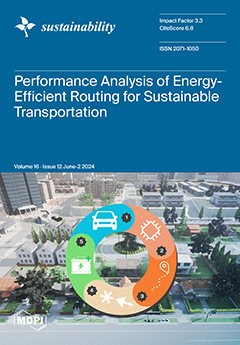Carbon capture, utilization, and storage (CCUS) technology is vital for China to achieve its carbon neutrality goal. However, the high cost of CCUS projects, multiple processes, and insufficient policy support make it difficult for firms to invest independently. As an innovative way to
[...] Read more.
Carbon capture, utilization, and storage (CCUS) technology is vital for China to achieve its carbon neutrality goal. However, the high cost of CCUS projects, multiple processes, and insufficient policy support make it difficult for firms to invest independently. As an innovative way to achieve waste resource utilization, industrial symbiosis can effectively break through this dilemma. Based on the real options theory, this study establishes decision models for independent investment in a carbon capture and storage project by a coal-fired power plant (CFPP) and independent investment in an enhanced oil recovery project by an oil company. Then, from the perspective of industrial symbiosis, the decision models of cooperative investment in a CCUS project by a CFPP and an oil company are constructed. The models consider the supply–demand relationship of CO
2, the correlation between carbon and oil prices, and technological uncertainty. The differential equation method is used to solve the models to obtain the investment thresholds and option values. Finally, all models are applied to a CCUS project in Guangdong Province, China, for simulation analyses.
Based on the simulation results of the CCUS project in Guangdong Province, our major findings are as follows: (1) Industrial symbiosis can effectively promote the development of CCUS projects. Compared with the independent investment mode, industrial symbiosis reduces the investment threshold of the project by at least 25.42% and increases the option value by at least 12.94%. (2) It is more likely to trigger the project’s investment when CO
2 supply and demand are balanced. The CCUS project’s investment threshold increases with the
imbalance between CO
2 supply and demand. (3) Stable carbon and oil prices can promote the project’s investment, and increasing the positive correlation coefficient of the prices will increase the project’s investment threshold.
Full article





